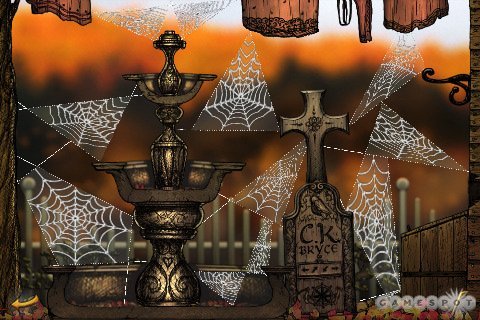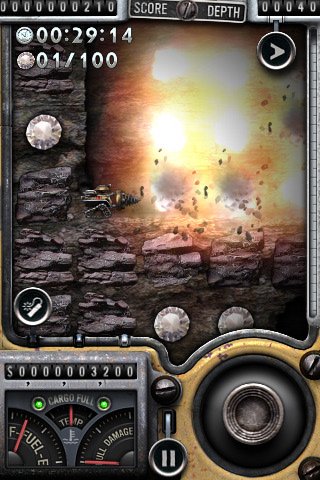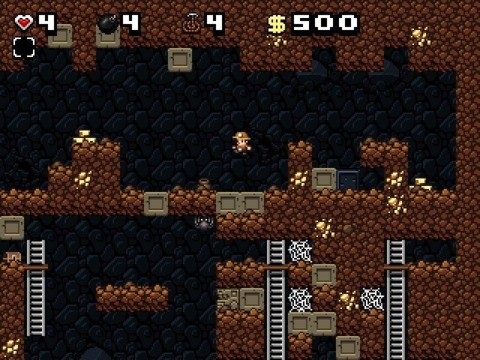Raising indie awareness through game design - Keynote
GDC 2010: Tiger Style co-owner Randy Smith advocates immediacy, depth as a way to elevate the status of small-scale developers.
Who was there: Tiger Style Games co-owner Randy Smith delivered the 2010 Independent Game Summit keynote address at this year's Game Developers Conference. Though Tiger Style is perhaps best known for its critically acclaimed iPhone title Spider: The Secret of Bryce Manor, Smith's resume includes creative director at EA Los Angeles as well as project director of Ion Storm's Thief: Deadly Shadows. Smith also served in a designer role at Looking Glass Studios, working on the critically acclaimed Thief: The Dark Project and Thief II: The Metal Age.

What he talked about: Smith's keynote address was titled "Increasing Our Reach: Designing to Grab and Retain Players." The veteran-turned-indie game designer offered the congregated masses tips on ways to improve game design and, in turn, help raise the profile and earning potential of smaller-scale games.
But first, Smith cautioned that his design tips don't apply to all indie games, as many by their nature seek to push the boundaries of what interactive software can be. However, this mentality doesn't give developers license to design bad games, he said.
Launching into his talk, Smith emphasized two key design elements that are important for indie games: immediacy and depth. Beginning with immediacy, he offered the example of Adam Atomic and Danny B's Canabalt. The game, he said, is a great example of immediacy, thanks to its simple controls and the ease by which players can try again after failure. The game does have a low threshold for failure, though, which can have a negative initial impact on players.
Powerful immediacy can be achieved through solid "affordances," which are essentially the things in a game that players can do. Explaining this concept, Smith said that a weak affordance would be bullets that bounce off a wall, while a strong affordance would be bullets that can deform terrain. Juicy affordances--such as accelerating and decelerating while running or adding particle effects to certain objects--are also a key element of immediacy, he said.
InMotion Software's I Dig It is a solid example of a game that combines strong and juicy affordances, he said. In it, gamers search for treasure by digging tunnels in the ground. Smith noted the ample feedback that the game provides, as well as the strong affordance of deforming the environment.
One game that doesn't offer particularly strong immediacy, according to Smith, is 5TH Cell's million-unit-selling Scribblenauts. In particular, Smith takes exception with the laborious tutorial process, which prevents players from simply jumping into the game by going into intricate detail on the various ways to use its tools. He believes that it is important to show players the tools but let them figure out how to use them.

Smith then transitioned to the idea of depth in game design. Returning to I Dig It, Smith called out the positive depth mechanics of upgrades and resources, as well as multiple levels and environmental features. One negative of depth for this game, he noted, was that the core mechanic--that is, digging--is always the same.
One good strategy for getting gamers deeper into a game, he continued, was the concept of "depth on demand." Through this design strategy, the game gives players a high rate of success but lets them pursue additional accomplishments to truly master it. To use this design method successfully, he said, it's important to inform players about how much of the game they actually saw, so they know how much was left behind.
As a way to increase depth, Smith brought up the notions of "low- and mid-level loops." A low-level loop relies on specific tactics and deals with what players actually do to address the problems at hand. Conversely, a mid-level loop requires more strategy and invites players to think about what they need to do to accomplish their overall goals.
Depth can also be increased through gobs of content, Smith said, using the example of Backflip Studios' Ragdoll Blaster. The puzzle game offers nearly 200 different, short levels, and it slowly introduces new features as players progress. The additions are on the shallow side, but their cumulative effect is to provide substantially more depth to the play experience, he said.
Smith then offered two games that he regards as some of the best available from the indie community in terms of combining immediacy and depth. The first, Farbs' Captain Forever, is an Asteroids-esque shooter that lets players customize their ships from parts salvaged in space. The game features extensive customization that impacts the actual physics of how the ship handles and performs.
As for immediacy positives, Smith said the game features a simple control scheme with clear feedback to players. It also has strong and juicy affordances, namely in the way that ships explode. As for depth, Captain Forever offers extensive and meaningful ship-building, where players are rewarded for being creative.
Because his talk aimed to improve indie game design, Smith then offered some suggestions on what Farbs could have done better. He noted that the immediacy could be improved if there were a more forgiving experimentation process with ship construction or if there were a more defined pause in which players could customize their ships. As for depth, Smith suggested giving players more of a reason to customize their ships, or adding in environmental objects, such as gravity wells and asteroids.

The second game Smith was particularly keen on was Derek Yu's Spelunky, which is a 2D platformer with an Indiana Jones theme that features deformable terrain. Again, simple controls, clear feedback, and strong affordances were hailed as positive immediacy. As for depth, the game brings many of the design mechanics of the roguelike genre (think Diablo) to platforming, so it features random content and varied level layouts. He said that it also has core game mechanics that change frequently, features a strong "depth on demand" component, and has interesting power-ups, enemies, traps, and scenarios.
As a way to improve Spelunky's immediacy, Smith suggested a refinement to the game's control scheme. Also, he felt that the game is currently a bit too hard.
Smith closed his keynote address by stressing that his design philosophy of immediacy with depth is just one way in which game makers can create compelling play experiences. The overall goal, though, is to elevate the indie gaming scene so that those who create innovative software can gain a higher level of recognition and support for their work.
Quote: "What I want: Indie to have more fans."--Randy Smith
Takeaway: Smith's design philosophy of combining immediacy with depth could help build an audience for indie games by creating more enjoyable, rewarding experiences for players. And even though indie developers are notorious for bucking the "rules," Smith believes there is still room for making smart game design choices.
Got a news tip or want to contact us directly? Email news@gamespot.com
Join the conversation